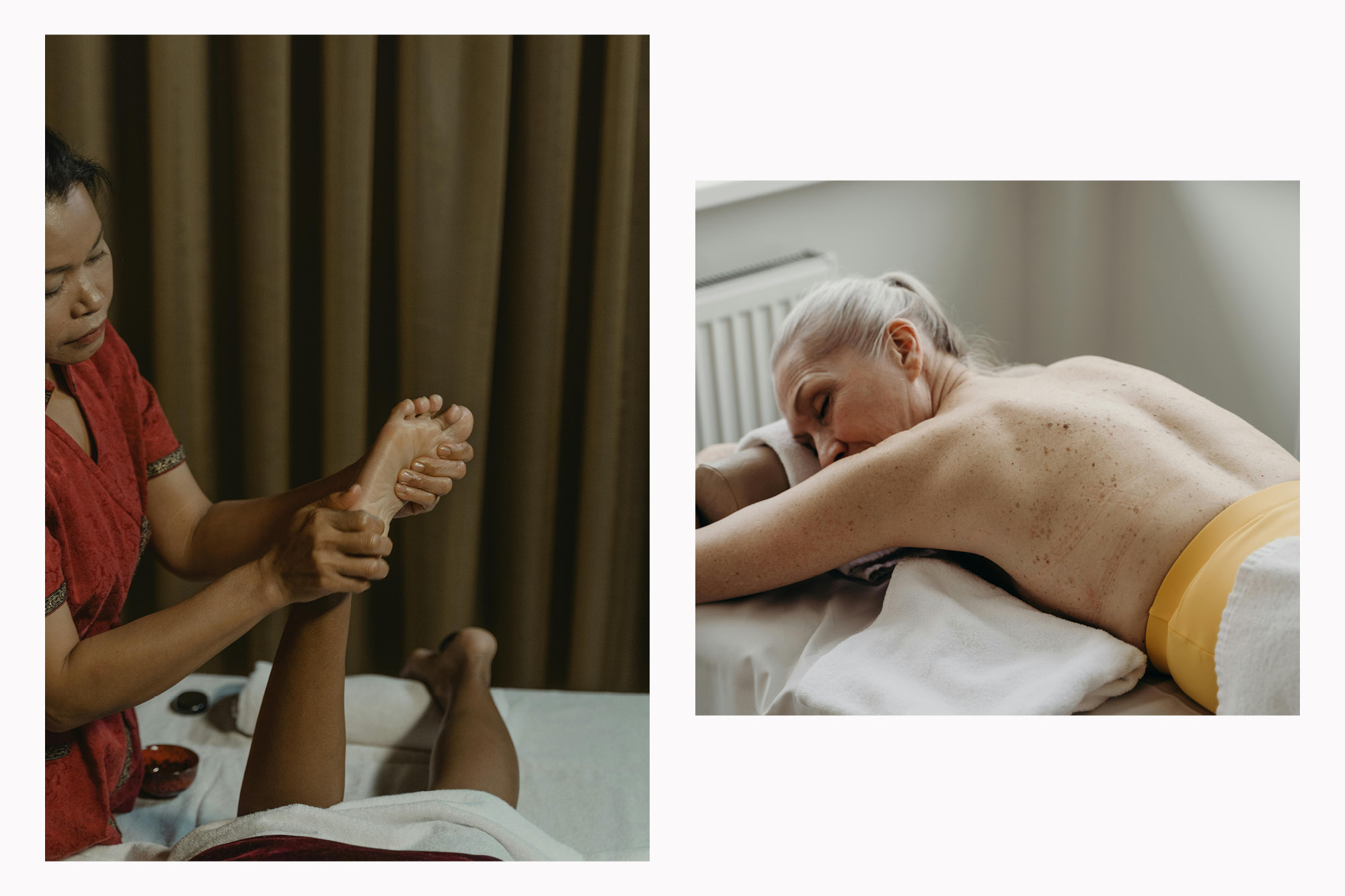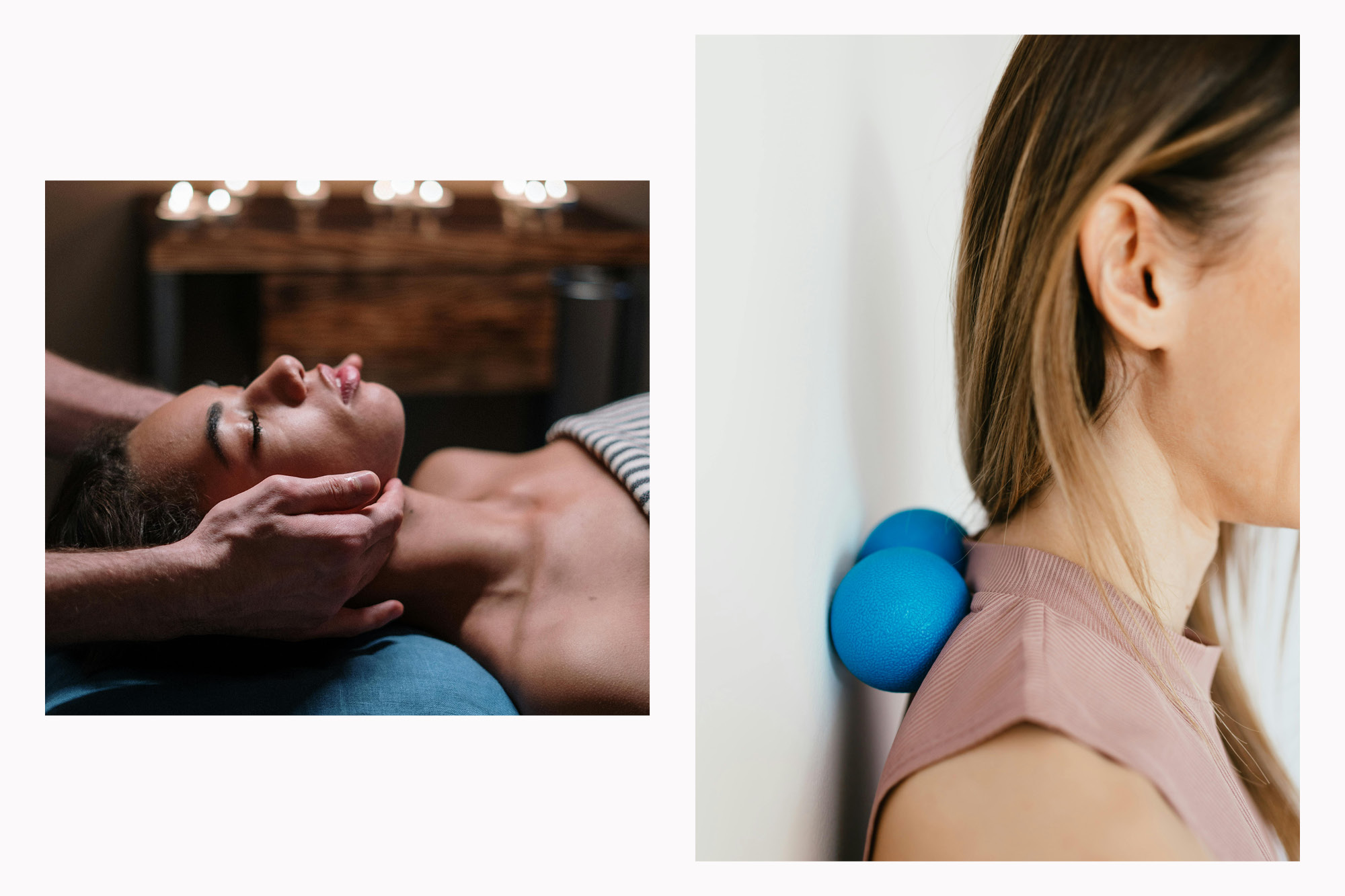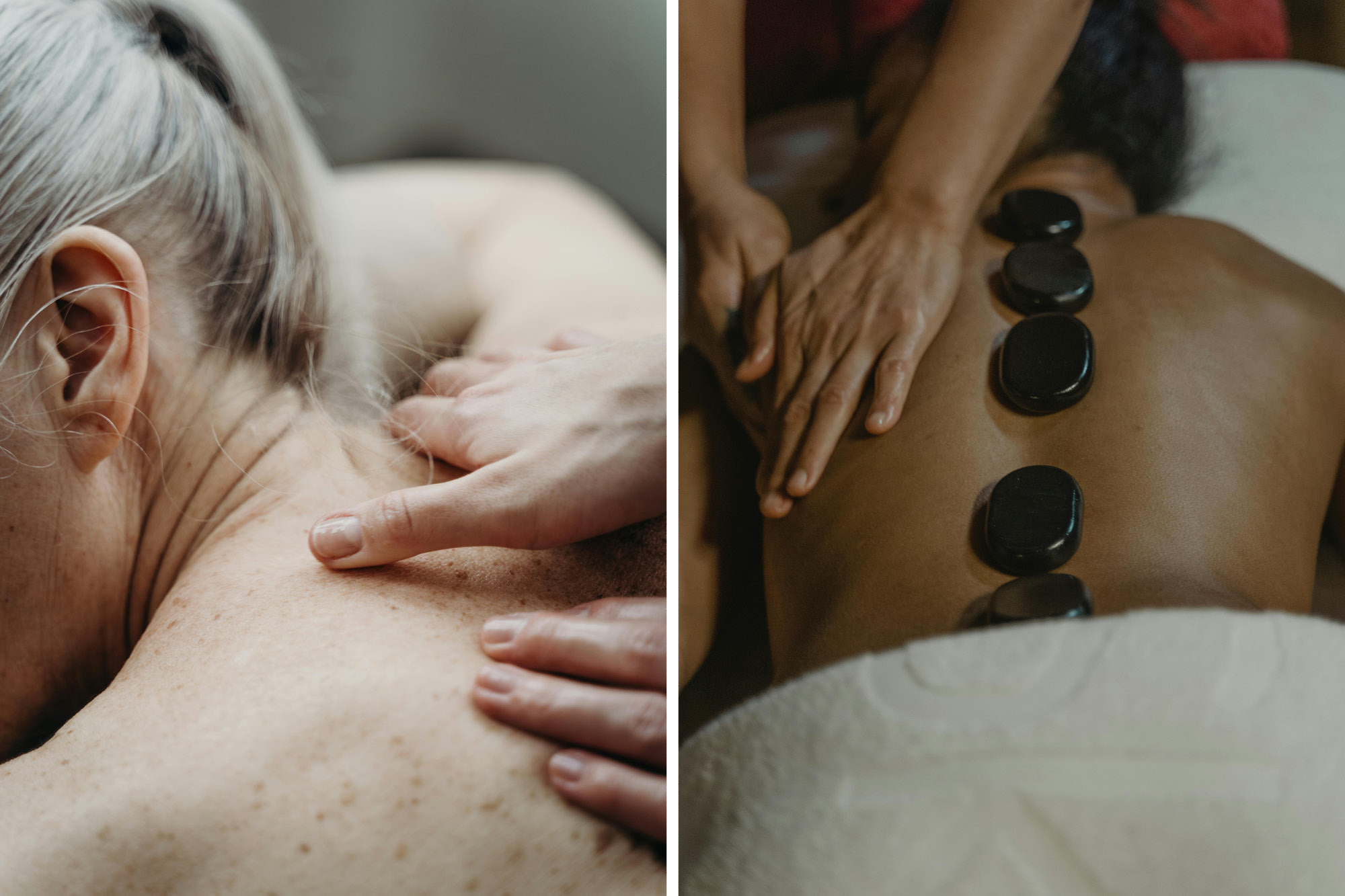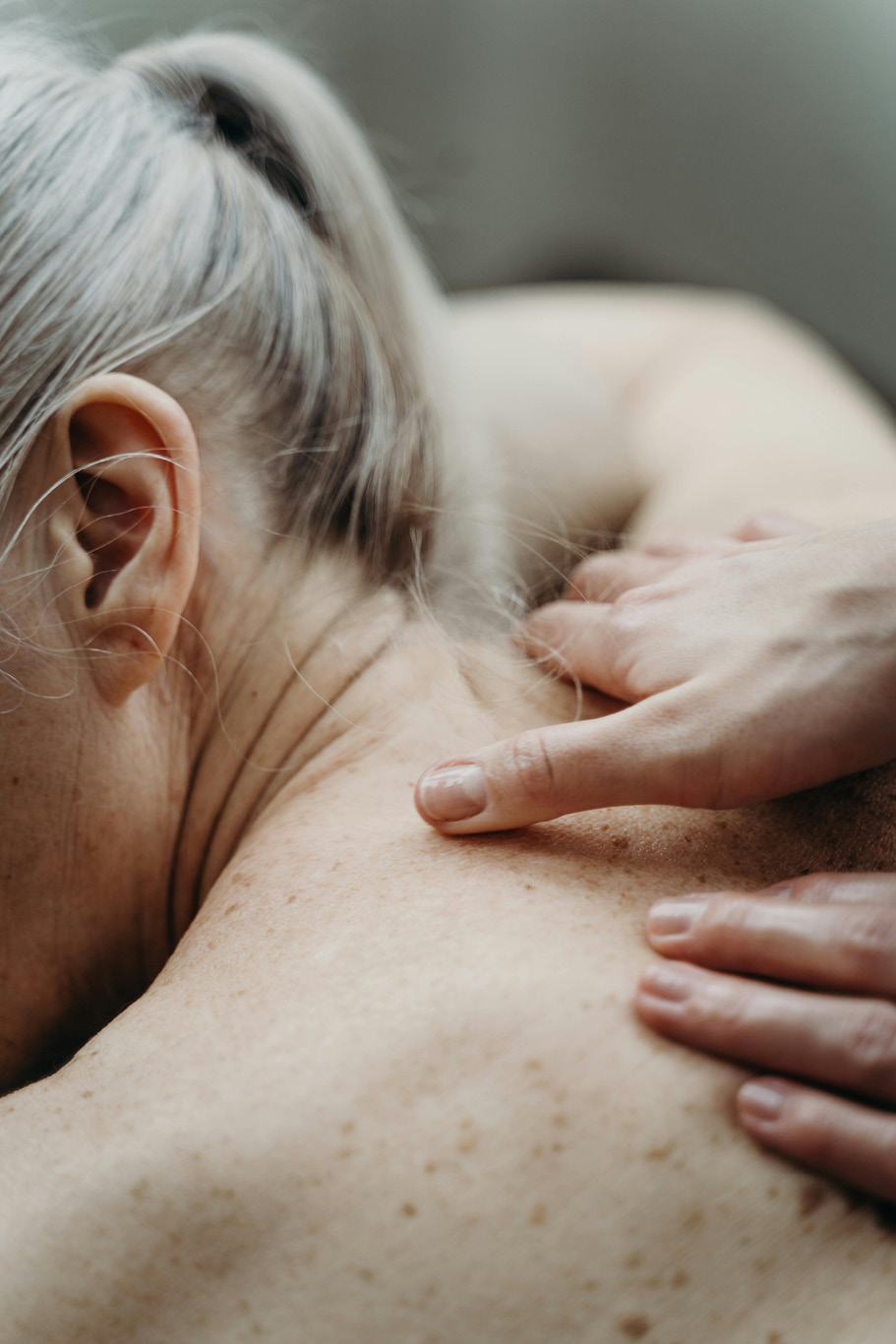Connection to self is one of our key pillars of wellness. What better way to feel refreshed and grounded in your body and mind than a massage? Many of you agreed in our recent Members Questionnaire that if you had an extra $100 to spend on your wellness today, you’d choose to get a massage too! We’re diving into why this therapeutic tool is not just an extravagance to be saved for a spa day, but an investment in your overall health and wellbeing.
Are there scientific benefits to having a massage?
Yes! It’s been proven that massages are full body medicine—good for your mood, mental health, and physical health. Multiple studies (including this one) show participants who received a massage experienced significant decreases in cortisol (the stress hormone), an improved immune system, and an increase in oxytocin (the contentment hormone). And there’s a growing body of research showing massage can help with symptoms of depression, improve sleep (this study was done on cancer survivors and was particularly effective for post-menopausal women!), improve blood circulation, relieve muscle soreness, and even alleviate migraines.
Keep reading for your quick guide to the different types of massage so you can decide what’s right for you.

Swedish massage
A gentle, relaxing full-body massage that promotes relaxation. It’s a great option for beginners!
Hot stone massage
Similar to Swedish massage, but also uses heated stones to help deeply relax the muscles.
Aromatherapy massage
Similar to Swedish massage, but also incorporates essential oils applied directly on your skin and through a diffuser for enhanced relaxation.
Lymphatic drainage massage
A gentle technique that encourages the circulation of lymph fluid throughout the body.
Shiatsu massage
A Japanese full-body massage that focuses on energy points. While relaxing, it can also leave you feeling re-energized!

Thai massage
A full-body, energizing massage that incorporates stretching and interactive movements. The practitioner may use their hands, knees, and elbows to massage you. This can feel a bit uncomfortable during your first sessions.
Deep tissue massage
A deep, full-body massage that’s well-suited for very tight muscles caused by exercise, stress, or chronic pain. While it may feel uncomfortable during the session, it brings relief afterwards. This deep release option is a Movement Living team go-to.
Sports massage
Similar to deep tissue massage, but targets specific areas of sports-related injury.
Trigger point massage
A specialized massage technique that applies gentle yet firm pressure to localized spasms or knots in the muscle, aka “trigger points”. If you’re looking for deeper pressure and specific areas of pain relief, this is a good option.
Reflexology massage
A type of massage that involves applying pressure to specific points, mainly on the feet, but also on the hands and ears.
What if I don’t enjoy massages or don’t have access to a good massage therapist?
You can easily do self-massage at home for free! Just 10 minutes of self-massage can reduce muscle soreness by 30%, even if you have osteoarthritis. We recommend this free 14-minute YouTube video where massage therapist Pam Kuras teaches some easy self-massage techniques. The comment section agrees: “Wow that was amazing, I felt super relaxed afterwards!”
And if you want to really treat yourself, try using a massage gun. The name sounds intense, but these devices use percussive therapy that is scientifically proven to be effective. Our co-founders, Amanda and Gab, are known to use a Theragun between meetings. You can find one recommended by a physical therapist that suits your needs here, and be sure to check the recommended session time to avoid overdoing it.
Your wellness assignment: set time aside this month for a massage. You can book in with a massage therapist or block out time in your calendar for self-massage. Turn your phone on silent, light a candle, and use a nice moisturizer or oil. Your body will thank you!







